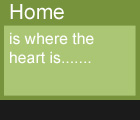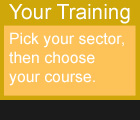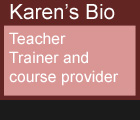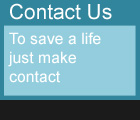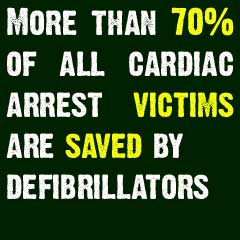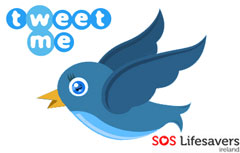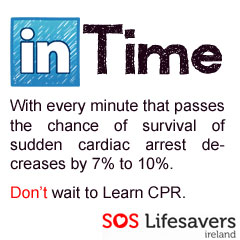The following information is from the Sudden Cardiac Arrest Foundation
How To Save a Life
Sudden cardiac arrest (SCA), often misunderstood as a massive heart attack, is a treatable condition that does not have to lead to sudden death. When someone suffers SCA, he or she may be fine one minute and then collapse without warning the next. Without immediate intervention, the victim almost always dies. SCA is the leading cause of death in the U.S., affecting more people than breast cancer, prostate cancer, colorectal cancer, AIDS, traffic accidents, house fires and gunshot wounds combined. Only 7% survive nationally--but 50% or more could survive.
You can make the difference between life and death for someone you care about by knowing what to do and doing it quickly. SCA victims need immediate help--waiting for emergency personnel to arrive at the scene can lead to delays in care and reduce the chances for survival. That is why you must learn how to act quickly and effectively. Here is how you can save a life:
Steps
Learn how to recognize sudden cardiac arrest (SCA). When someone is in SCA, he or she suddenly loses consciousness, normal breathing stops, and there are no signs of life.
- Decide to help. Victims of SCA can only be saved if bystanders intervene immediately. There may not be enough time to wait for professional rescuers to arrive at the scene. The chances for survival decrease 10% with each passing minute after collapse. You may be the victim's only hope for survival.
- Call 999 or better yet have someone else nearby to call 9-1-1 to get professional help on the way so you can start treatment. Be sure to communicate with a specific person, such as "Bob, call 999." Otherwise bystanders in a crowd may hesitate and wait for someone else to help.
- If an automated external defibrillator (AED) is immediately available, grab it or send someone to retrieve it and bring it to you. Apply the AED electrode pads to the person's chest as shown on diagrams that accompany the AED. Follow the voice and visual prompts. If a person is in a heart rhythm that needs to be shocked, the AED will automatically shock the heart. This electrical therapy can restore a normal heart rhythm if it is used quickly enough. Do not be concerned about harming the victim. AEDs are safe and effective and can only help. AEDs will not shock someone who does not need to be shocked. 9-1-1 medical dispatchers can provide additional guidance.
- If an AED is not immediately available, begin cardiopulmonary resuscitation (CPR). Tilt the head back and listen for breathing. If the victim is not breathing normally, pinch the nose, cover the mouth with yours and blow until you see the chest rise. Give two breaths. Each breath should take one second. If the victim still not breathing normally, coughing or moving, begin chest compressions. Push down hard on the chest (about 1.5 to 2 inches) between the nipples. Do this 30 times. Pump at the rate of 100/minute--faster than once per second. Continue with 2 breaths and 30 pumps until help arrives.
- Remember saving victims from sudden death due to SCA depends on immediate bystander intervention. Only you can prevent sudden death!




